Data Center for the World Cup

Less than a year is left to the 2018 FIFA World Cup - a magnificent football festival, which is expected next summer in several cities of Russia. Preparing for such a large-scale action, broadcast around the world, provides for the deployment of a powerful IT infrastructure. In total, about 11 billion rubles will be invested in the creation of IT infrastructure for the World Cup. The construction of telecommunications infrastructure will “Megaphone”, which allocated for this purpose 4.25 billion rubles.
The stadiums are already preparing for the arrival of guests, and some were run-in at the last Confederations Cup. For comparison, “Megaphone” at the last tournament:
- involved 11 thousand km of fiber-optic communication lines (FOCL);
- installed more than 1.5 thousand antennas in stadiums;
- organized radio coverage at more than 80 venues, of which 60 were upgraded and provided with indoor coverage. These include: stadiums, hotels, operations centers, training grounds, ticket sales points, FIFA racks at airports and transport stations;
- provided communication channels, mobile data transmission and telephone services at all venues of the event;
- deployed a geo-distributed DWDM network with elements independent of each other, which made it possible to provide high-quality TV broadcasting from stadiums to the International Broadcasting Center in St. Petersburg;
- three times reserved the network, which ensured its resiliency and ensured continuous monitoring of the established infrastructure. To monitor their equipment installed at the facilities, their own Life Control solution was used;
- organized ISDN telephony, which allowed commentators to conduct their reports.
We, the NAG company, also made our own drop in this sea of work. Designed and assembled by our specialists container data center , now serves one of the stadiums of the past Confederations Cup and the upcoming 2018 World Cup. I would like to tell about this project.
So, our engineers were faced with the task of designing a mobile data processing center that would meet all modern safety and life support requirements necessary to protect equipment from failures. In addition, it was necessary to supply three diesel generators that could autonomously provide electricity to the data center.
Architecture
The data center container is a structure mounted on a base frame, the frame of which is a steel all-welded, rigid structure made of a rolled section.
- External dimensions (L x W x H) 5960 x 2460 x 3000 mm;
- Internal dimensions (L x W x H) 5660 x 2160 x 2600 mm;
- Useful area of 12.23 m²;
- High mechanical loads ;;
- Fire protection EI30 according to EN 1363 as component testing;
- Protection against water and dust according to EN 60529;
- The degree of fire resistance in accordance with Federal Law No. 123-FZ-II of July 22, 2008 (Certificate of Conformity No. C-RU.PB12.V.00203)
- The load capacity of the floors provides 1500kg / m2.
Infrastructure for placing equipment in the data center
To place the equipment in the data center, we used 19 inch MetalBox cabinets. Cabinets are a construction which includes: perforated metal doors, roller bearings, doors, terminals and grounding cables, support with horizontal adjustment, mounting components, top cover, side panels.

Server cabinets are installed on special rail systems that allow you to easily move them in the transverse direction, this provides access to equipment, both from the front side and from the back.

Power supply and uninterrupted power supply system
The distribution of electricity inside the data center is carried out with a cable with copper conductors with PVC insulation and a PVC sheath of low flammability fire protection systems with copper conductors that are laid in special trays.
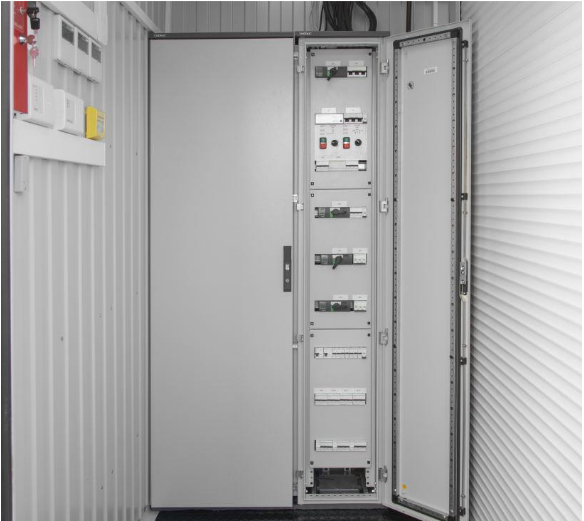
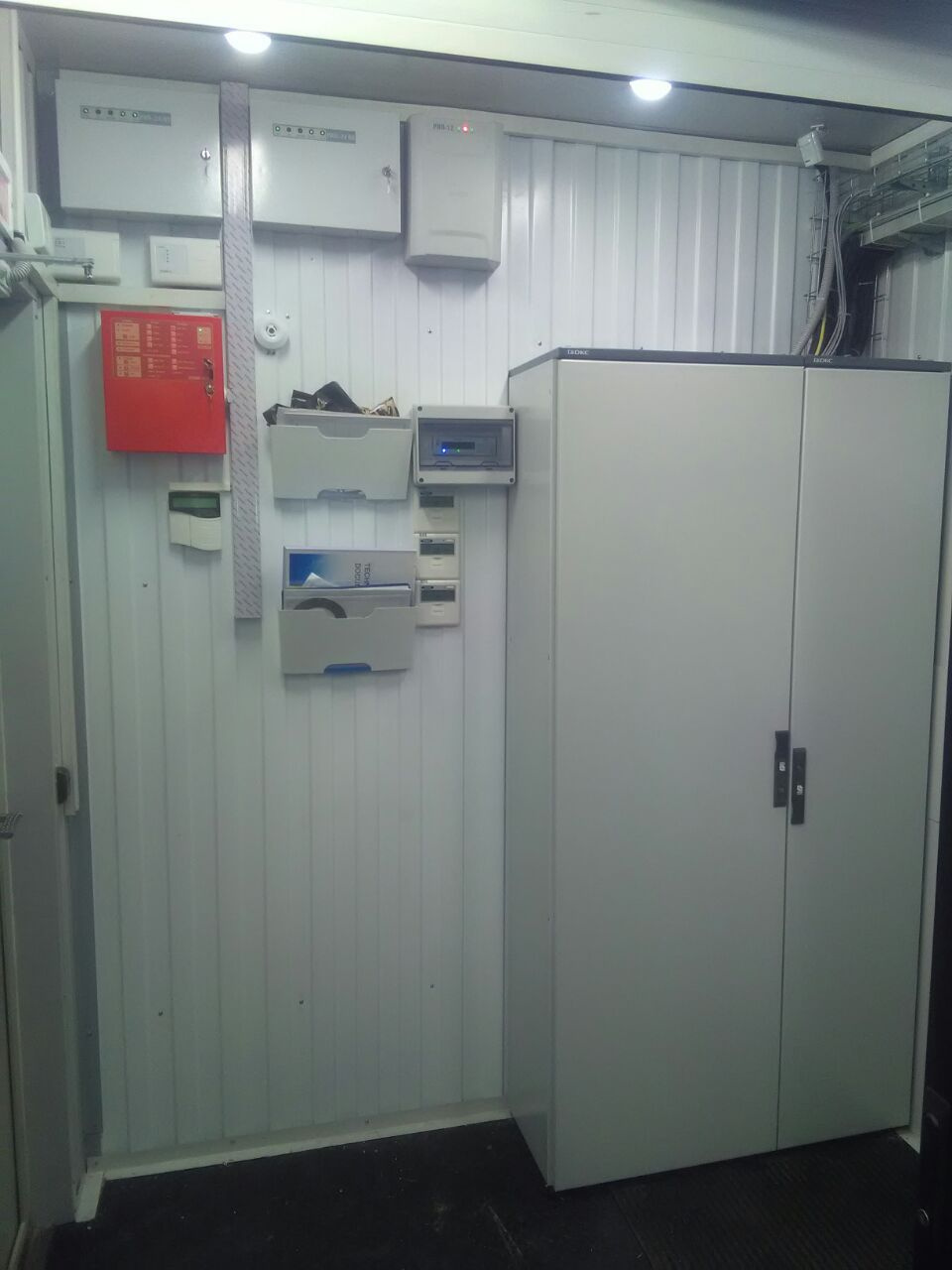
- Introduction of data center power up to 20 kW (in the amount of 4 racks, the total maximum power is indicated without engineering systems).
- Rated power: 36 kW (including engineering systems);
- Supply voltage: 380 V, 3L + N + PE;
- Reliability category: third;
Uninterrupted power in the container provides a modular UPS SNR-UPS-ONRM-20-HPMSAX33 with the possibility of a phased increase in power. It consists of 3 modules with a power of 20 kVA, forming a system with a redundancy level of N + 1.
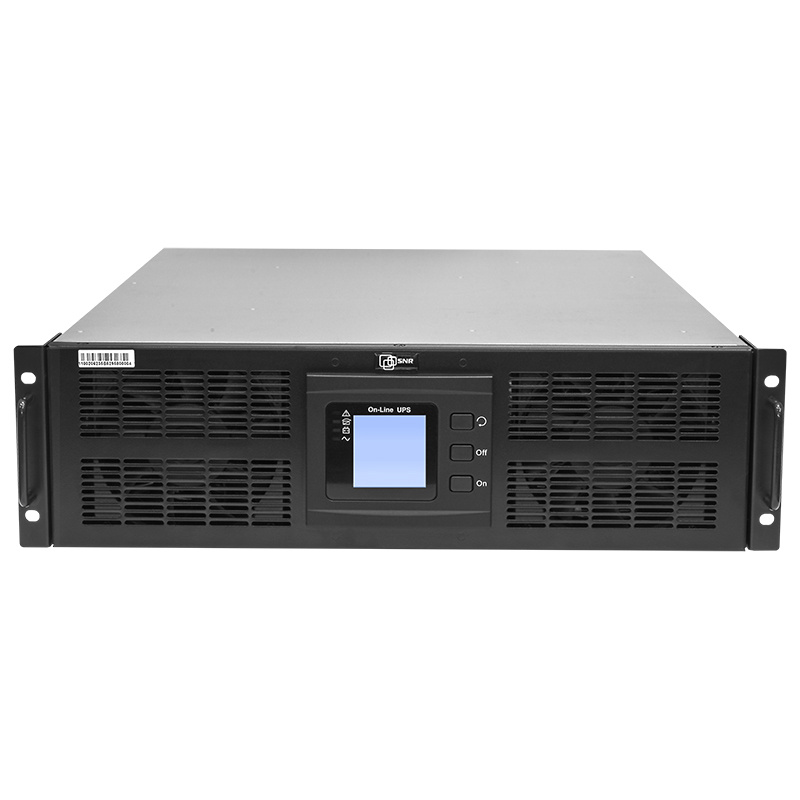
The HPM UPSs (UPS) are designed to work with external high-capacity rechargeable batteries built on-line with double voltage conversion, in which the load is always powered by an inverter, while ensuring stable and filtered sinusoidal power supply. UPS are designed to protect workstations, servers, communication systems, industrial, telecommunications, banking, network and other equipment.
A system of 32 Tesla Power batteries is connected to the UPS, providing 25 minutes of battery life at 100% load. Tesla Power batteries are designed for installation in 19, 23 inch cabinets and racks, are also used in other cases when compact placement of batteries is necessary.
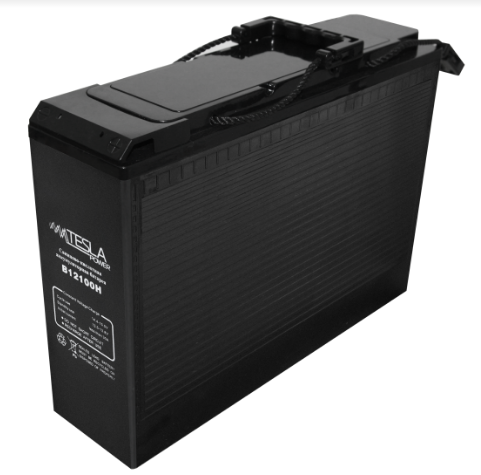
Frontal terminal layout facilitates installation and reduces maintenance and battery replacement time. Good performance at low discharge currents make these batteries the best choice for telecommunication systems and other critical loads designed for a long autonomy time.
Structured Cabling System
To connect IT equipment in server cabinets is used:
- UTP cable 5e category produced by LANsens.
- 24 port switching panels SNR;
- patch cords with RJ-45 connectors - RJ-45.
Power supply and uninterruptible power supply cables are laid through various cable ducts and trays.
For power supply cables, a wire tray with wall-mounting support consoles is used.
The flexible cabling has been connected to the Metal Box server cabinets. Using a flexible cable channel allows you to reliably lead to the power cabinets or control cable without the risk of damage during the movement of the telecommunications cabinet.
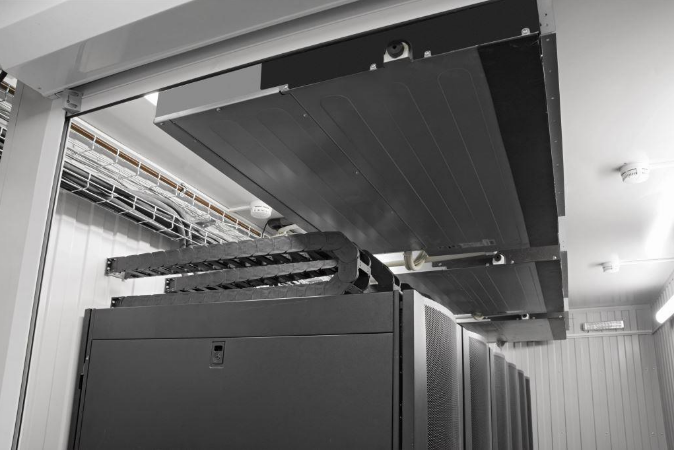
Fire extinguishing systems and air conditioning
The container data center provides fire extinguishing and air conditioning systems. To extinguish a fire in a protected room, it is provided for automatic filling of its volume with gaseous extinguishing agent - Freon 318C. This is the most acceptable option for such premises.
For air conditioning of the container, three channel industrial air conditioners manufactured by General Climate are used. The cooling capacity of each air conditioner is 17.6 kW. N + 1 reservations. The air conditioners are modified with a winter kit (guaranteed operation down to -40 degrees).
The data center air conditioning system Data Box consists of three channel split-systems with power consumption in cooling mode of 7.2 kW each.
Diesel Generator Station
In addition to the data center were supplied three diesel generator sets (DGS) TPDG80 with ATS (80kVA / 64kW backup power). DGU with a fairly compact size has high performance and stable performance in voltage and power. The engine and generator are equipped with vibration-absorbing mounts, which reduces the noise and vibration of the installation.
At the production stage, the units and assemblies of the plant passed strict quality control and all kinds of tests.
Main settings:
- Cummins engine 6BT5.9-G1 engine
- Generator Stamford UCI224G
- Microprocessor control module PLC-920
- Main circuit breaker 120A
- Mechanical type speed controller
- Self-excited generator
- AS440 voltage regulator
- Connector for AVR system
- Unattended lead-acid rechargeable batteries 2 * 12B / 70ach
- Dry type air filter
- 236 L fuel tank
- Dry weight 1198 kg
- Noise level at a distance of 7m - 90.8 dBA
- Dimensions (WxDxH) - 24858831495 mm
- Power in the main mode of operation - 80kVA / 64kW
- Power in standby mode - 88kVA / 70kW
- Voltage 380 V
The microprocessor module is responsible for controlling the operation of the engine and controlling the basic parameters and signaling errors. The engine is started and stopped using a button; a key start lock is provided.
Finally, a photo of the data center and diesel generator set already mounted on the site.
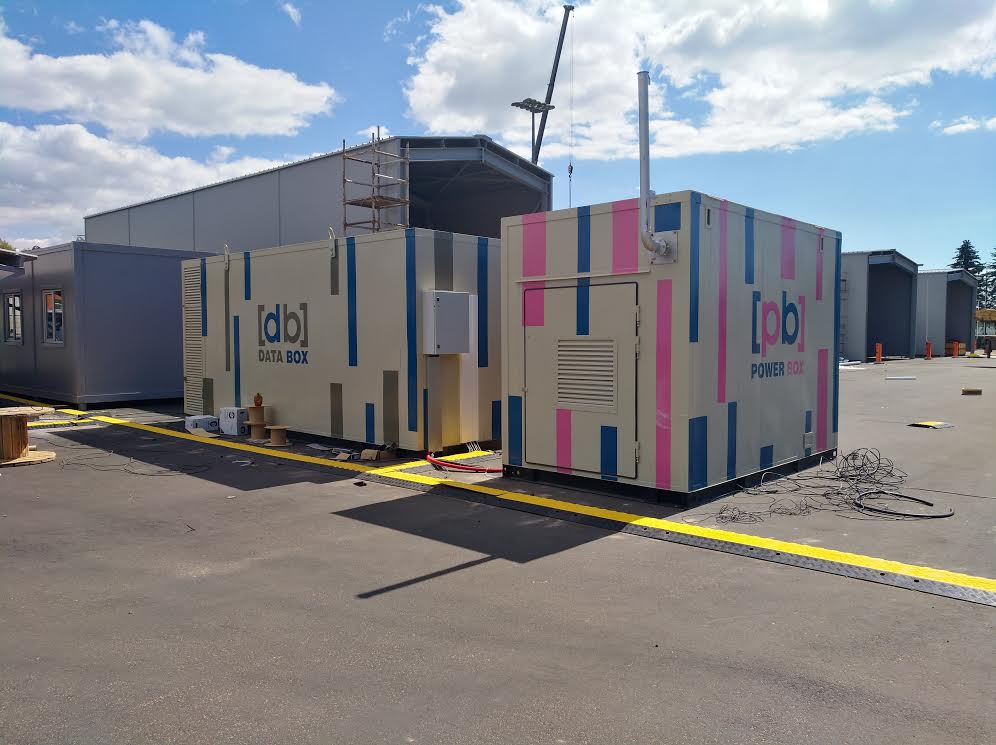
All Articles